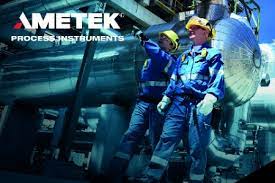
Analytical gas measurements in the sulfur recovery unit (SRU) help to ensure reliable, efficient, and safe operations. With decades of experience in sulfur recovery applications, AMETEK Process Instruments offers the solutions to overcome measurement challenges and minimise harmful emissions.
Sulfur recovery units (SRUs) are a long-proven solution to remove elemental sulfur from hydrogen sulfide (H2S) rich acid gas streams in hydrocarbon processing, refining, and steel production plants.
Designed to use the industry-standard Claus process, modern SRUs typically recover 90+% of elemental sulfur, preventing significant amounts of H2S and sulfur dioxide (SO2) from being released in to the environment.
With increasing global regulations, anything less than 99% recovery is, frequently, no longer acceptable. Various plant designs and additions have been developed with the goal of achieving sulfur recovery rates of 99.8%, or even 99.9%.
Among these developments are tail gas treatment units (TGTUs), designed to receive the gas output from the Claus unit, referred to as the tail gas. The TGTU will further capture – and thus reduce – sulfur compounds that will be released from the plant.
Compared to the feed gas at the start of the Claus unit, a typical tail gas stream will contain much lower levels – typically less than 5% – of sulfur compounds at the TGTU inlet, and these will ultimately be lowered to parts-per-million levels at the emissions stack outlet.
However, analysis of the process gas streams located throughout the SRU can be challenging and often take place in hazardous conditions.
For decades, AMETEK Process Instruments has designed and provided thousands of process analysers that are optimised for these analytical measurements.
Using its extensive experience in the sulfur recovery process, the company provides high-quality analytical solutions across the SRU and TGTU, delivering the measurements needed to ensure efficient sulfur recovery operations.
One of the major solutions for providing reliable measurements after the Claus unit converters and condensers is the 888 Sulfur Recovery Tail Gas Analyzer.
The 888 utilises ultraviolet (UV) spectroscopy to accurately monitor H2S and SO2 concentrations in sulfur recovery tail gas.
A built-for-purpose system, the 888 delivers temperature sensing at multiple locations, a demister designed to remove elemental sulfur, and optional internal blow back to remove any salts that are formed in the sulfur removal process, all housed in a single gas analyser.
Two configurations of the 888 are available for SRU measurements. The original 888 is compact and rugged, and mounts directly on to the process pipe, eliminating the need for heated sample lines or fibre optic connections to a remotely located probe.
The 888L is suitable for end-use locations that require the analyser electronics and interface to be located away from the sampling location – its electronics and measurement enclosures can be mounted inside a shelter or at a location other than on the process pipe. The 888L includes a remote demister probe that is installed at the sample tap, and heated sample lines that transport the process sample gas to and from the measurement enclosure.
Both models deliver next-level reliability, with automatic flow control, flange temperature alarm, and an extended ambient temperature range providing solutions to the most common external failure modes.
The 888 range can also be used for critical H2S measurements in sulfur pit safety monitoring.
For SRU feed-forward control, the IPS-4 full-composition, real-time analyser measures H2S, CO2, NH3 and all oxygen-consuming species in acid gas streams. This allows the exact amount of air to be added or removed from the reaction furnace for steady state control.
TGTUs use continuous, analytical gas measurements to ensure reliable, efficient, and safe operations. Typically, the most valuable, reliable, and accepted analytical measurement points are made on either side of the TGTU’s H2S absorber – one before, and one after. It is also important to measure residual hydrogen (H2) at the outlet of the reduction reactor, to ensure enough H2 is available to convert all sulfur compounds in the TGTU to H2S, which is ultimately absorbed and returned to the front end of the SRU. Carbonyl sulfide (COS) can also be measured prior to the incinerator, as an early sign of catalyst ageing.
AMETEK Process Instruments’ 931, 932, and 934 photometric gas analysers deliver the H2, H2S and COS measurements needed, reinforcing the company’s expertise and experience as a supplier of comprehensive SRU solutions.
Finally, AMETEK Process Instruments also provides continuous emissions monitoring systems that help SRU operators to optimise their process and ensure compliance with environmental regulations for H2S, SO2 and other emissions.